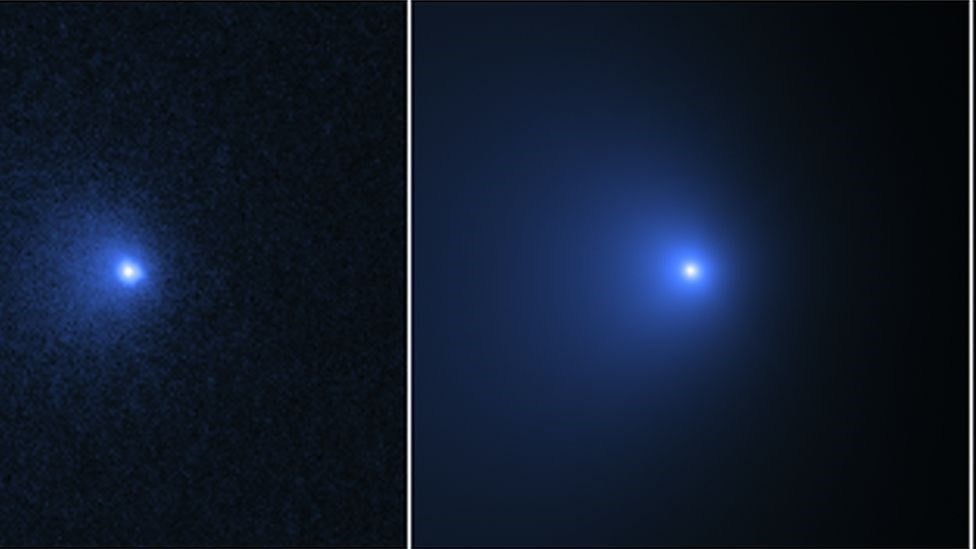
On Wednesday, NASA announced its Hubble Space Telescope has spotted the largest icy comet nucleus ever seen by astronomers.
The estimated diameter is approximately 80 miles across, and its nucleus is about 50 times larger than that found at the heart of most known comets.
Its mass is estimated to be a staggering 500 trillion tons, a hundred thousand times greater than the mass of a typical comet found much closer to the Sun, NASA says.
The behemoth comet, C/2014 UN271 (Bernardinelli-Bernstein), is barreling our way at 22,000 miles per hour from the edge of the solar system.
But not to worry, NASA scientists say. It will never get closer than 1 billion miles away from the Sun, which is slightly farther than the distance of the planet Saturn. And that won’t be until the year 2031.
The previous record-holder was comet C/2002 VQ94 with a nucleus estimated to be 60 miles in diameter. It was discovered in 2002 by the Lincoln Near-Earth Asteroid Research (LINEAR) project.
“This comet is literally the tip of the iceberg for many thousands of comets that are too faint to see in the more distant parts of the solar system,” said David Jewitt, a professor of planetary science and astronomy at the University of California, Los Angeles (UCLA) and co-author of the new study in The Astrophysical Journal Letters.
Comet is so bright at such a large distance
“We’ve always suspected this comet had to be big because it is so bright at such a large distance. Now we confirm it is,” added Jewitt.
“This is an amazing object, given how active it is when it’s still so far from the Sun,” said the paper’s lead author Man-To Hui of the Macau University of Science and Technology, Taipa, Macau and added that “we guessed the comet might be pretty big, but we needed the best data to confirm this.”
The comet has been falling toward the sun for well over 1 million years. It is coming from the hypothesized nesting ground of trillions of comets, called the Oort Cloud.
The diffuse cloud is thought to have an inner edge at 2,000 to 5,000 times the distance between the sun and the Earth. Its outer edge might extend at least a quarter of the way out to the distance of the nearest stars to our sun, the Alpha Centauri system.
See all the latest news from Greece and the world at Greekreporter.com. Contact our newsroom to report an update or send your story, photos and videos. Follow GR on Google News and subscribe here to our daily email!



